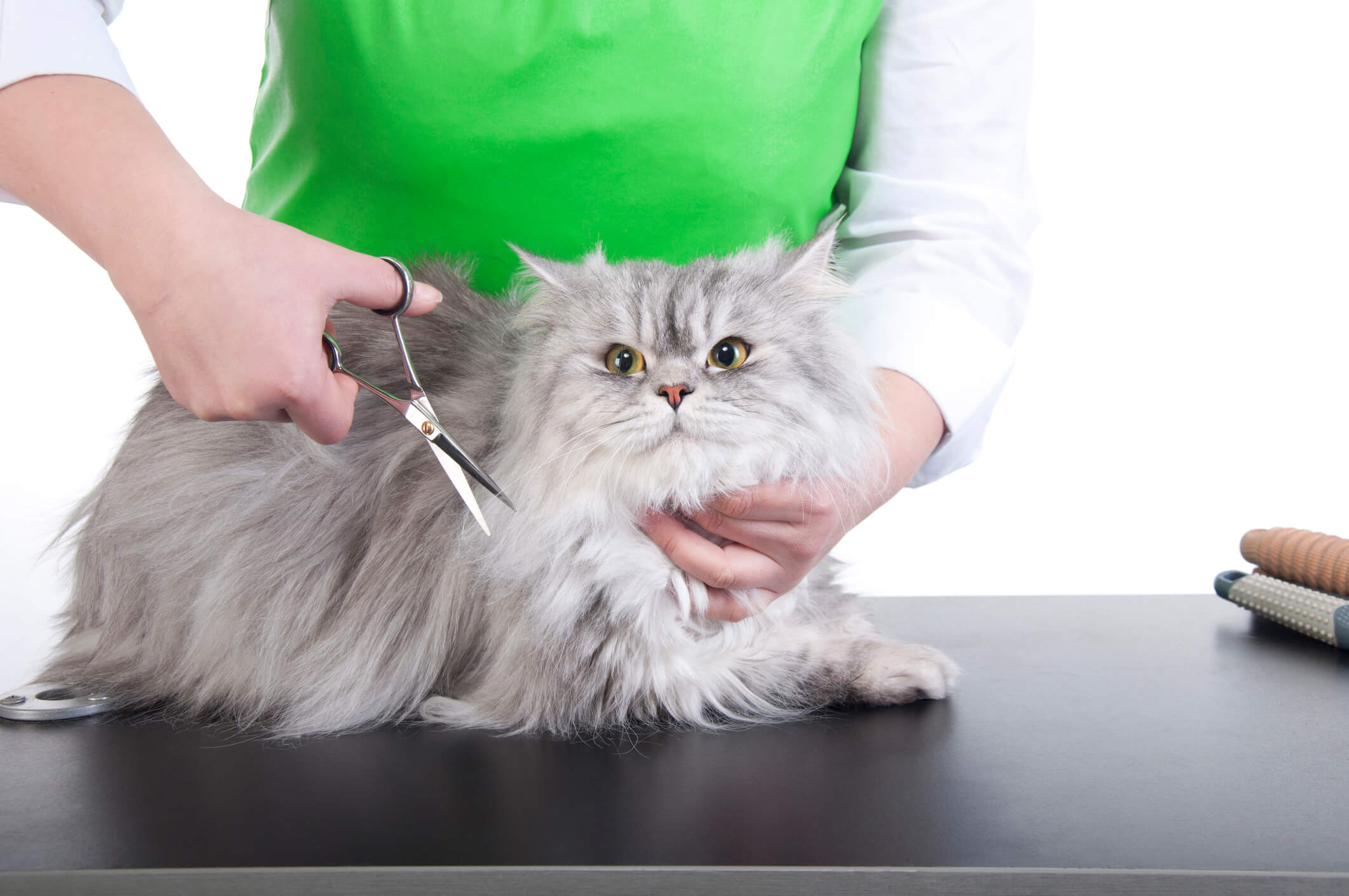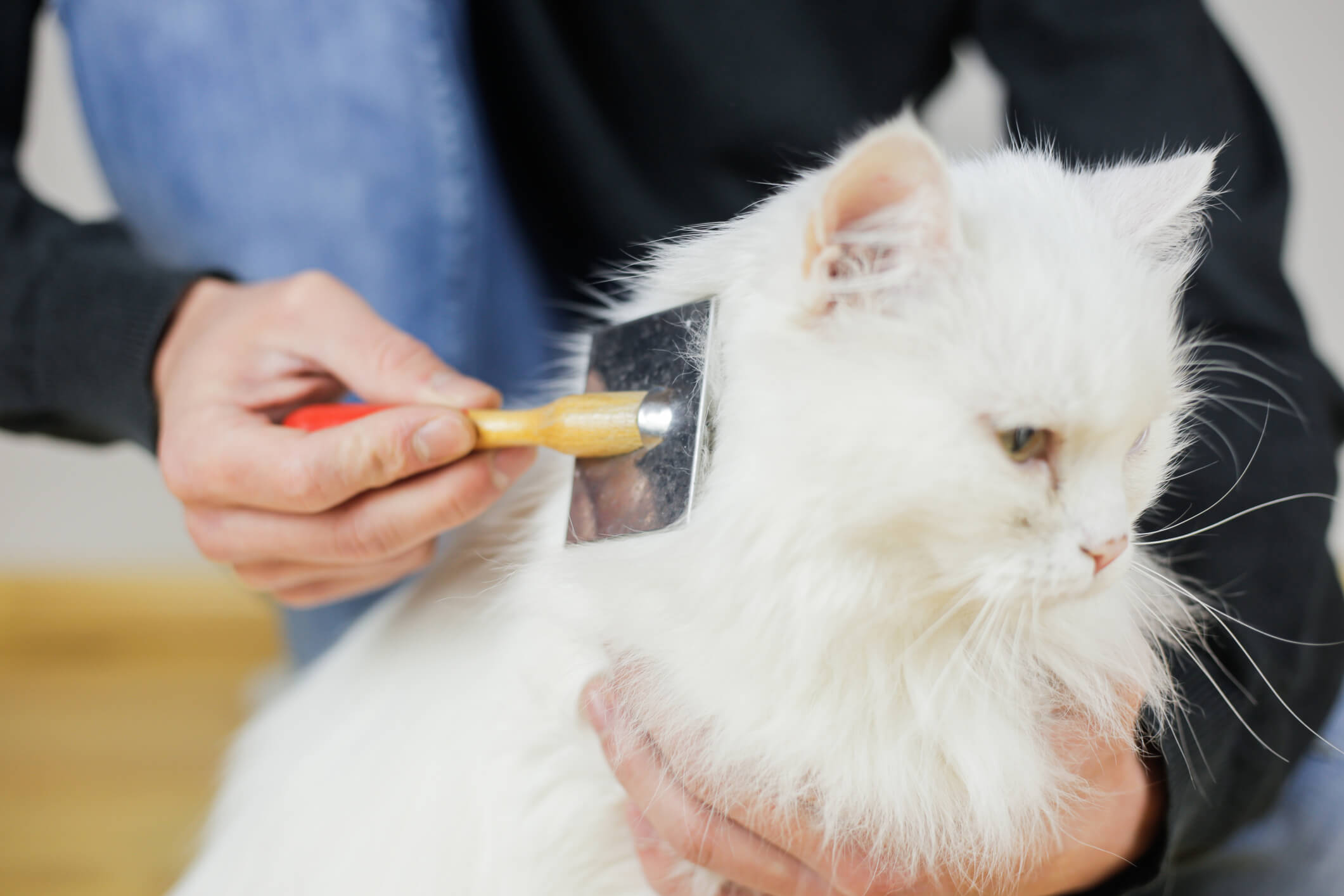
4 Grooming Tips for Long-Haired Cats
Felines with long, silky fur can be a challenge. Their coats require more work to maintain and can easily turn into an unruly mess. However, while long-haired cats require lots of time and effort, the steps for maintaining their luscious locks are actually quite simple.
Here are a few pointers for at-home care and when to ask a professional groomer for help.
Why owners should groom their cats
Cats usually groom themselves to some extent. You’ll often see a kitty using their tongue and teeth to get rid of dirt and loosen tangled hair. However, cats shouldn’t be left to their own devices all the time, especially if you have a long-haired cat on your hands. Without regular grooming sessions from owners or a professional, kitties with long hair can develop painful mats that could lead to skin problems.
The purpose of grooming a cat is to remove debris and dead hair so they can enjoy a smooth, shiny coat. Dead hair that isn’t removed with a brush can get tangled among the healthy strands of fur and form mats. Tight mats might pull on a cat’s skin every time they move and cause discomfort. Mats also block air circulation to the underlying skin, which can lead to dry, flaky skin and rashes.
Additionally, an important part of cat grooming is checking for abnormalities on the skin. Cats who aren’t regularly examined could be suffering from a range of skin problems without you realizing it. Common issues that affect the skin include allergies, ringworm, fleas and bacterial infections. Ringworm is highly contagious and could spread to other members of the household, so regularly assessing your cat for skin abnormalities is a must.
Caring for your kitty at home
Matted fur and skin problems in long-haired cats are easily avoided when owners prioritize regular grooming sessions. Use these four simple steps to keep your kitty’s coat gleaming and healthy.
- Daily brushing: Long-haired cats need a good brushing at least once a day to prevent matted fur. Brush with an upward motion around the legs, belly, abdomen and neck. These areas of the body are most prone to tangling. Gently lift their tail to see if feces or urine have gotten stuck in the fur and carefully remove debris with a pair of grooming scissors. As you brush your cat, examine their skin for signs of redness, swelling, bumps, lesions or scaly rashes.
- Bath time: Bathing a cat too often can lead to skin dryness, so it’s not recommended for the average cat. However, elderly and overweight cats might require baths because it’s too difficult for them to groom on their own. Start by lining the tub with a non-slip bathmat and fill it with a few inches of lukewarm water. Dilute a cat-friendly shampoo and gently massage them from neck to tail, avoiding contact with the eyes and ears. Rinse, then dry your kitty in a warm towel, and don’t forget to reward them with treats!
- Detangling mats: Despite your best efforts, some mats are unavoidable. Long-haired cat breeds such as Persians grow extra-fine, cottony strands of hair that easily become matted. When this happens, gently pull the mat apart with your fingers or use a detangling brush designed for long hair. Remember to grab the base of each mat so you don’t tug on the cat’s skin. A vet or professional groomer will have to cut out mats that are woven tightly together.
- Skin protection: Most cats should be put on flea and ringworm prevention, even if they spend all their time indoors. Cats with food allergies need a balanced diet free of allergens in order to avoid triggering itchy skin rashes. The same goes for environmental allergies—choose a hypoallergenic shampoo for your cat and purchase fragrance-free detergents and cleaning products to minimize skin problems.
When to call in a professional

Some hair and skin problems are beyond the owner’s control. For example, you should never attempt to cut out mats on your own because scissors can easily nick a squirming, frightened kitty. A professional groomer will know how to remove tightly matted fur without accidentally harming the cat. They’re also skilled at handling feisty felines who have no interest in being groomed!
Notify a vet right away if you detect the symptoms of skin problems. You never know if the cause is mild allergies or something much worse. Seeking a professional diagnosis is the only way to ensure your kitty receives the right treatment plan and avoids future infection.
Taking care of your furry feline is hard work. You’re constantly battling matted fur, and no matter how many times you brush the cat’s hair, they never seem to stop shedding. However, it will all be worth it when you get to see their gorgeous coat gleam under the sun!



